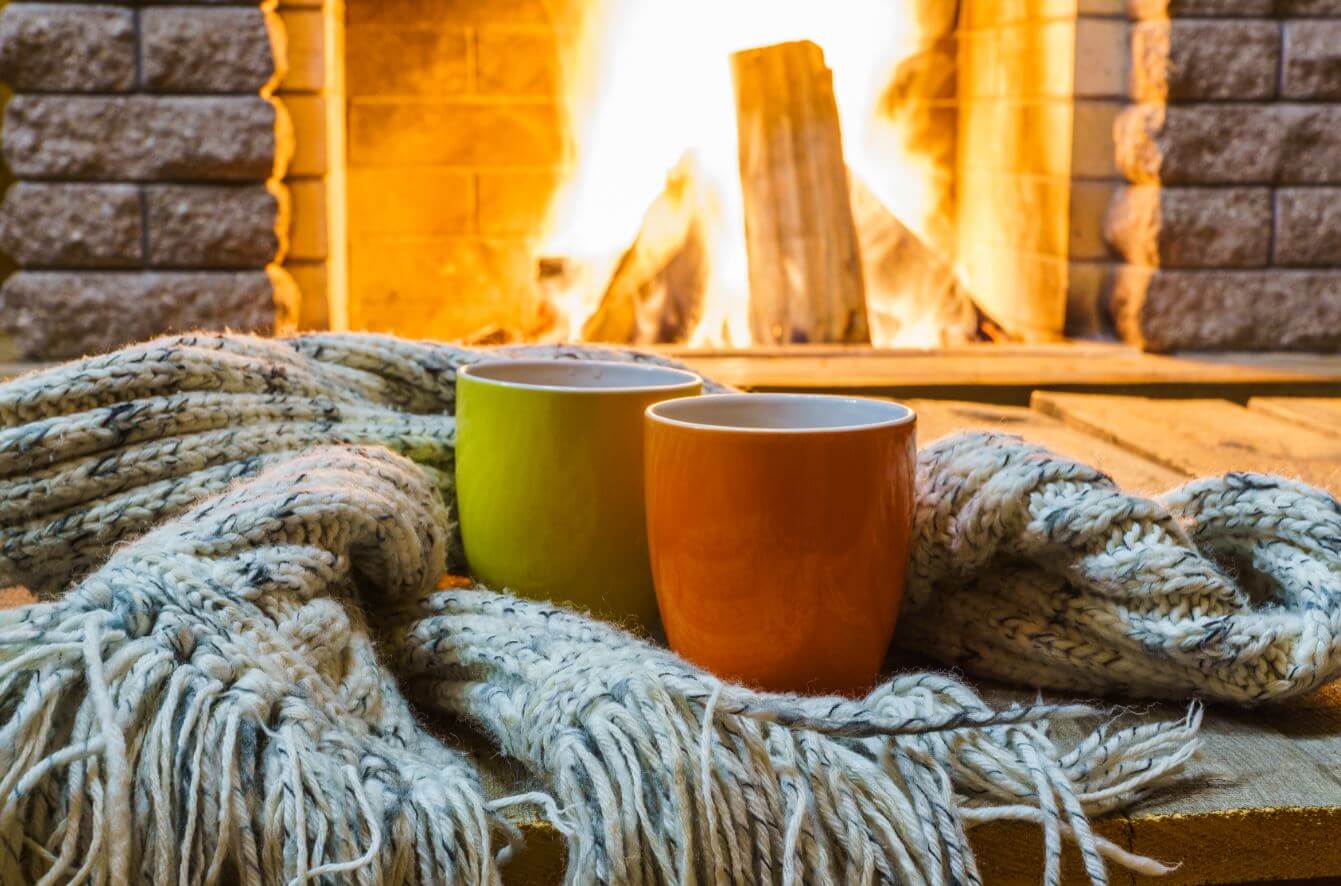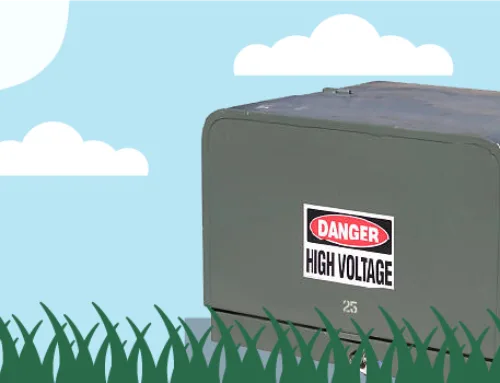How to Keep Your Home Warm Efficiently This Winter
by Tyler Castle
6.3 min read

How to Keep Your Home Warm Efficiently This Winter
The winter season is here and whether you’re a homeowner or a renter, thoughts inevitably turn to
saving money, cutting heating costs, and the most efficient ways to heat a home. Heating space takes up 45% of an average American home’s energy bill, making it the largest energy expense. The decisions you make on your home’s heating solutions can have a big impact on your energy bill.
Here are five tips from Santanna Energy on how to keep your house warm this winter without breaking the bank.
1. Use a Smart Thermostat

Smart thermostats like Nest and Ecobee take the guesswork out of regulating your home’s
temperatures. Smart thermostats use motion sensors to detect the presence of occupants in a home and intelligently adjusts the temperature.
These thermostats can also sense when the home is empty and adjust the temperature to accordingly, saving energy and money by preventing you from heating an empty home. According to the U.S Department of Energy, using a programmable smart thermostat can save homeowners an estimated 10 percent a year on heating costs.
To further optimize your home temperature regulation, if you have more than one area that needs temperature regulation (a basement or an attic, for example), install a separate thermostat for these areas. Some well trafficked rooms in your homes require more heating than other less visited rooms. Installing multiple smart thermostats will better help you keep areas in your home at optimal temperatures and save you money!
Another great tip when you’re thinking about installation is to set up your thermostat away from areas of the house that are artificially warm or cool to ensure you get an accurate reading. Placing your smart thermostat near a kitchen, for example, could make your device assume the home is warmer than it is.
2. Insulate Your Home
Drafty doors and windows can be the culprit if you’re having a hard time keeping your home warm. Warm air can escape under doors and windows and cold air can enter making it that much harder to keep your home in a comfortable temperature. Warm air leaking can also drive up your energy costs.
Walk through your home and take note of any drafts that come in from outside facing doors and windows. Pay attention to any weather seals that are worn out and need replacing and note any gaps in your doorways and windows that need to be patched up. For a more thorough examination, call your energy provider and request an in-person home heating efficiency test. Some energy providers offer this service for free and it’s a great way to find all trouble areas in your home as well as receive advice on how to correct them.
To stop heat from escaping through gaps in the doorway, place draft excluders underneath doors. Draft excluders are tools that look like tubes that are wedged underneath doors to prevent heat from escaping and cold air from seeping inside the home and are best placed on front doors and garage doors.
Seal drafty windows by weather-stripping them. Weather-stripping is best used on windows with
movable components. For stationary windows, it’s best to use caulk to fill in cracks and gaps. Take care when choosing weather-stripping. Make sure to choose appropriate sizing so your windows can remain operational and panes can still be slid up and down. Weather-stripping should seal cracks and gaps in windows but allow it to open and close freely.
3. Use Your Curtains and Ceiling Fans Efficiently
Simple household tools can help heat your home effectively as well. You can use your ceiling fan to help warm up your home. Change the direction of ceiling fan and set it to turn clockwise. The clockwise turn of the fan at a low speed draws up the air in the room upwards and forces warm air down and outward, warming your home.
Take advantage of sunny days during the winter. On particularly sunny days, open curtains to let
sunshine naturally heat your home. At night, close curtains to keep the heat inside your home.
If your home only has thin curtains, a great DIY tip is to hang blankets over curtain rods to improve
insulation. Similarly, investing in insulated curtains can further help warm up your home and prevent further heat loss.
4. Maintain Your Home Heating Appliances

One of the most efficient ways to heat up your home is to use appliances like fireplaces and furnaces. To keep these appliances in top working order, make sure that they are well maintained and cleaned. Dirty or broken appliances can cost you a lot of money and be a nuisance in cold weather.
Before firing up your fireplace in those cold winter days, make sure to do your due diligence and make sure it’s in good working condition. Chimney inspections should be done at least once a year and how often it is cleaned depends on how often the chimney is used. Chimney cleaners remove soot, blockages, and creosote buildup and will help your fireplace operate safely and more efficiently. Creosote is a flammable substance that builds up in your chimney as a result of burning wood. It only takes a small amount of soot and creosote to create a chimney fire. Chimney fires are very dangerous and can result in property damage as well as injuries.
Bringing in a professional to inspect your furnace or electric heat pump is also a great preparation idea for the colder winter months. You don’t want to get to the coldest days of the year and realize your furnace needs extensive maintenance.
If you think your furnace needs maintenance, do some basic checks before calling in a professional:
- Check your fuse box for any tripped circuit breakers to make sure your furnace is getting power and ensure it is switched on. Furnaces tucked into tight and confined closets can accidentally be switched off.
- Head outside and make sure nothing is blocking the fresh air intake and exhaust of your
furnaces. Not all furnace models vent through a chimney. Some newer models vent through the side of your home and sometimes leaves and insects can block the valve. - Check your thermostat. Make sure that batteries are replaced to keep them fully operational.
Also, check to see if your thermostat is set to “heat.” This seems obvious but so often, this small detail can be easily overlooked by busy homeowners. - Check your air filter if you find that your furnace is not blowing air as hard as it normally does.
Air filters trap dust and other particles in the air and over time, this buildup can reduce air flow in your system. For residential systems, it’s recommended to change air filters every three months.
5. Know What You’re Paying and Consider Fixed Price Options
Knowledge is power and knowing what you pay per unit for energy is just as important as knowing how much energy you use on average. We encourage you to look at your bill and compare it with a fixed rate from Santanna to see if you are getting a fair deal on your energy rates. At an average household use of 1000 kWh per month even a 1 cent difference per kWh consumed will impact your final bill by $10 a month.
Enter your zip code here and compare our rates to see what you could save on your monthly bill.
Tyler is an experienced energy professional, having worked for Santanna Energy Services, for the past four years. He is passionate about renewable energy and believes that diversifying the energy grid is the key to a sustainable future. Tyler is dedicated to supplying consumers with the best possible energy solutions and works diligently to make sure that Santanna can deliver the highest quality service.







